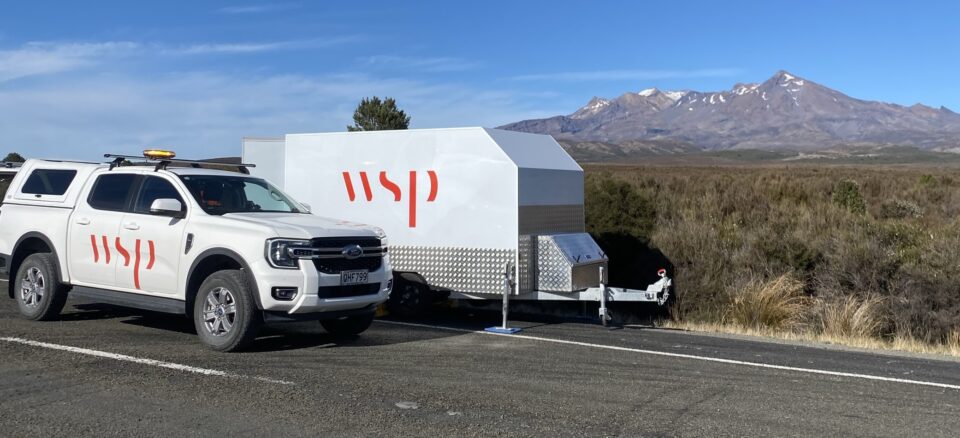Drivers in the central North Island may recently have noticed a large, WSP-branded trailer parked up near road crews and wondered what it contains. While the answer might seem mundane, it’s vital for ensuring the accuracy of road construction – and the safety of the roads we drive on. Article supplied by WSP.
WSP Rotorua laboratory manager Portly Griffiths has been at the helm of an innovation that’s transforming the way road construction materials are tested. Inside the trailer is specialist equipment designed to compact aggregates so the density and strength of road building materials can be accurately measured.
The aim, says Portly, is to make sure roads are compacted to the correct specifications for safe, long-lasting roads.
For over 20 years, the old testing methods proved tricky and uncertain even in laboratory-controlled conditions. The methods were even more unreliable in the field, with uncertainty about how much force was applied to the materials.
“The NZTA and the industry have been working on improving the laboratory methods for a long time and released one new test method just before Christmas last year,” says Portly.
“Our new trailer has been designed to get as close as possible to new test methods as we can when we have to compact in the field. One test must be compacted within an hour of road stabilising agents being added in the field. There aren’t many locations that we can achieve that when bringing field samples back to the lab.”
Portly and colleagues brought the new, mobile, test method to life in a prototype van, which was tested on the Desert Road last summer. That success led to the creation of the new trailer unit.
The trailer is fully equipped with a frame, balance, moulds and power hammer, designed to compact bitumen or cement stabilised aggregates in accordance with the latest test methods. Portly says the mobile, trailer testing unit is a game-changer, especially for the remote road projects.
“On the Desert Road, for example, the testing can now be done on-site, rather than needing to transport samples to the lab. This allows us to meet the NZTA’s strict requirements for testing, ensuring the right compaction is achieved within a very tight time frame.
“It’s not just about saving time – it’s about accuracy and quality,” he says.


Parting words from Jeremy Sole- a final column